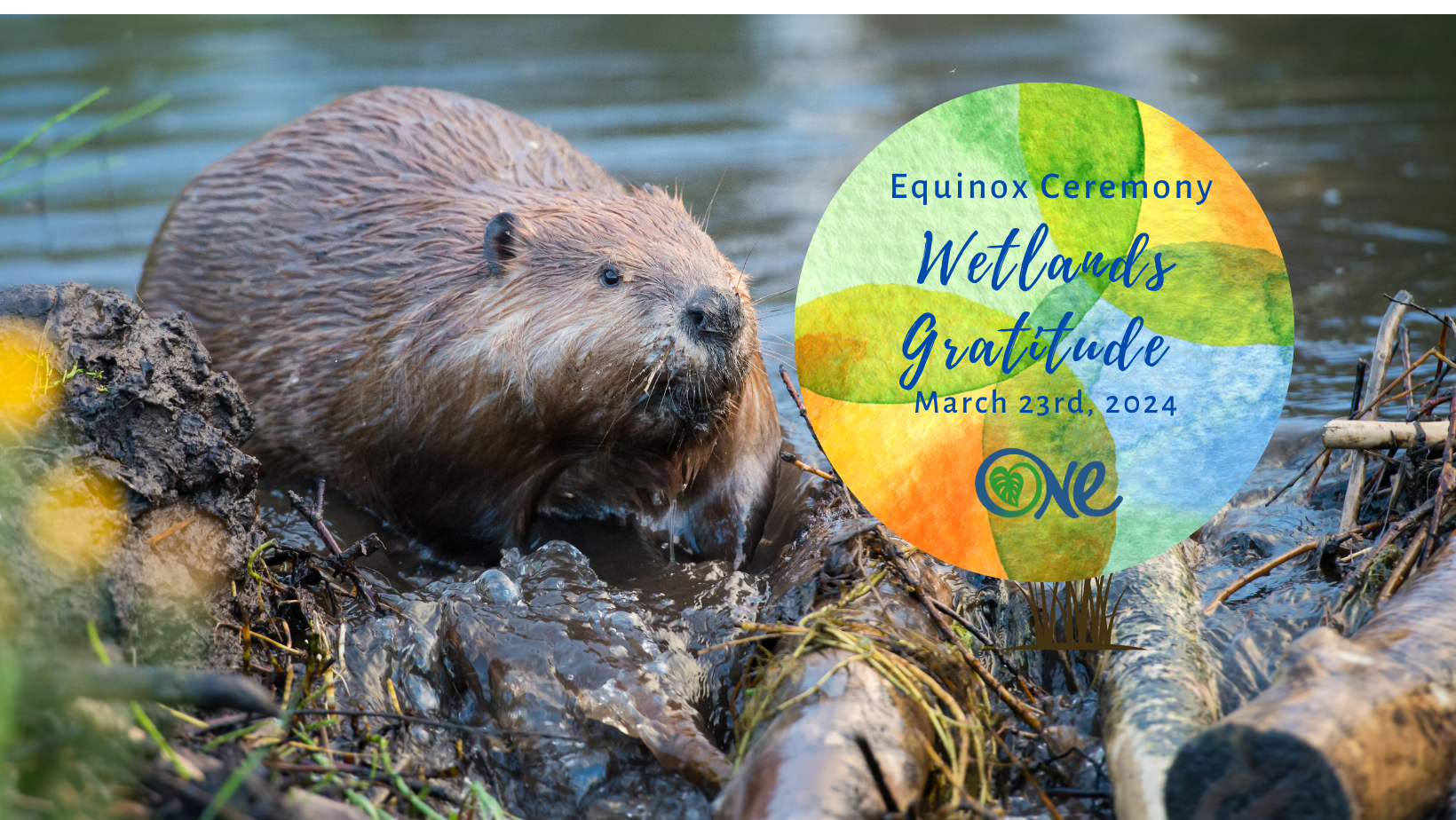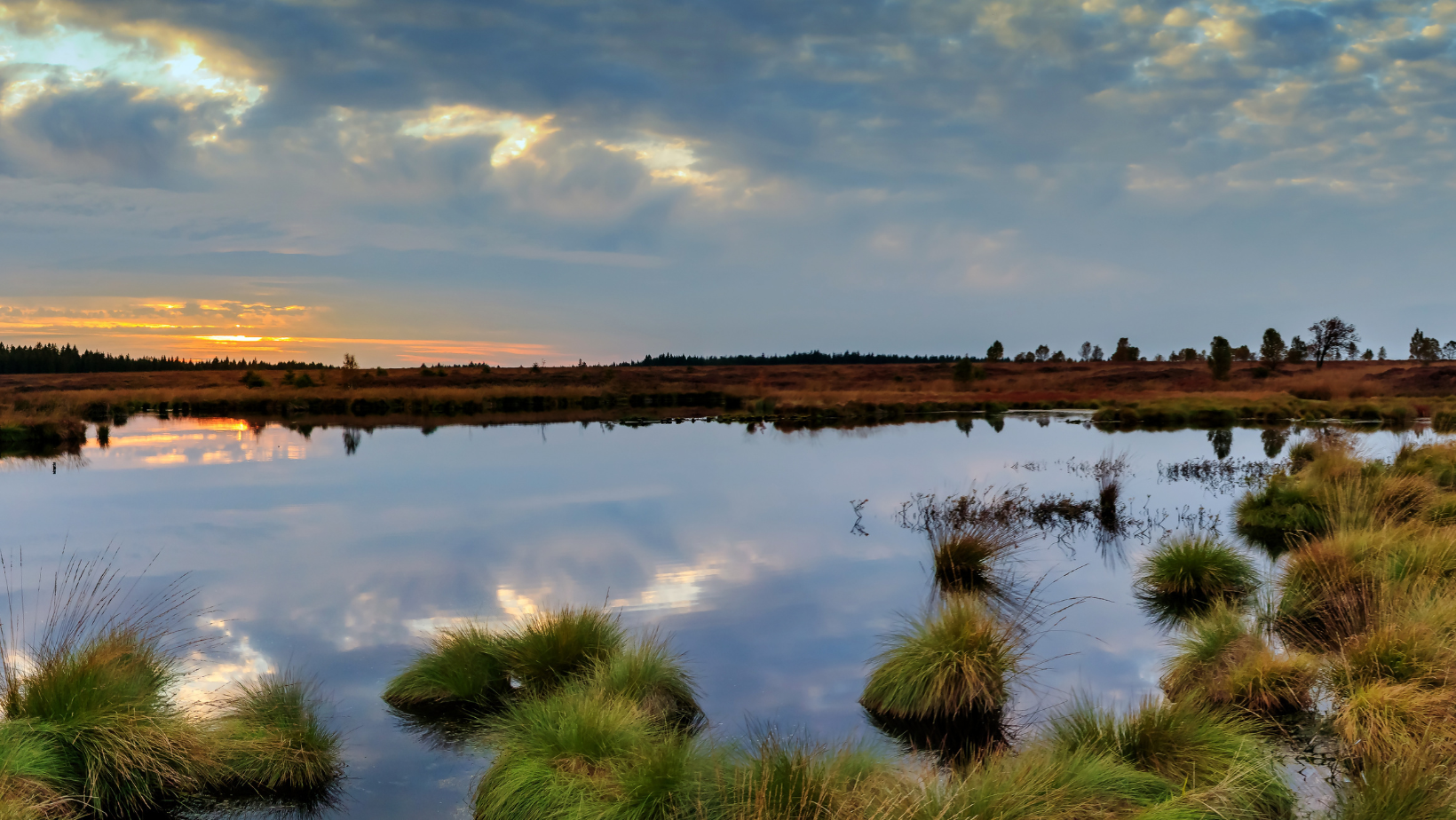
“Wetlands are actually unsung heroes. They nurture young fish, provide refuge to birds, bats, bugs, and sometimes to big mammals like panthers and bears. Mangroves, for instance, are trees and shrubs that inhabit coastal swamps, and they form peat that is home to clams, snails, crabs, and shrimp, and filter pollution out of the water. Their interlaced roots protect tiny fish from ravenous jaws of larger fish, and even manatees and dolphins take refuge there.”
About Wetlands
Wetlands play a vital role in maintaining the delicate balance of our beloved planet. These remarkable landscapes serve as the Earth's natural filtration system, cleansing water and ensuring its purity. The lush vegetation and intricate ecosystems found within wetlands provide a sanctuary for an incredible array of plant and animal species, many of which are unique and endangered.
We recognize the immense service that Wetlands provide to nourish the web of life. From flood prevention to carbon sequestration, these watery wonders contribute to the health and well-being of our planet in immeasurable ways. So much more than inconvenient swamps; they are the beating heart of biodiversity, sustaining life and fostering resilience in the face of environmental challenges.
Join us in celebrating the vitality and significance of Wetlands. Explore the unique landscapes, discover the diverse flora and fauna, and immerse yourself in their magic. Build or deepen your relationship with the Wetlands near you.
We are grateful for Wetlands! Their beauty, resilience, and importance inspire us as we prepare for the coming spring ceremony.
Together, let's embark on a journey of appreciation, conservation, and co-creative partnership with these magnificent landscapes.
Planning Your Wetlands Gratitude Ceremony
You are invited to Connect with ONE’s Global community
March 23rd, 2024 at your own time
This is a coordinated prayer that you offer in your own landscape (not an online event)
ONE coordinates this ceremony for people and Nature around the world, so that each gratitude ceremony, like yours, is one of many bright shining lights on Earth.
So that all the ceremonies can shine together, we have created a printable instruction sheet to provide guidance and the framework for you to bring your creativity and open heart.
You are invited to let us know you are participating and to share your Wetlands love notes and stories through the “Let us know you’re participating” button.
Reciprocity is a cornerstone in good relationships with our Nature kin, and expressing gratitude is vital to building Co-Creative Partnership with our landscapes. Preparing for this ceremony and expressing your gratitude will help build a deeper relationship and understanding between you and the Wetlands you belong to.
We encourage you to express your gratitude for the Wetlands where you live, adding your Heart and energy to a vibrant future for Earth and all life. Investigate and explore if you don’t know where wetlands are near you. See the resources below.
Gratitude for Wetlands
Beloved Wetlands, you are a sanctuary of Mother Earth, and I extend my heartfelt gratitude to you.
From mountains to oceans, you sustain life. Your marshes, swamps, bogs, fens, and meandering waterways, orchestrate a delicate dance with the elements.
You are a vital source of purification, biodiversity and a haven for countless species.
You harbor the unnoticed, housing a rich tapestry of aquatic life, diverse flora, and a symphony of birdsong, croaking frogs, and buzzing insects.
You have silently witnessed the passage of time interwoven into the fabric of our human histories and traditions.
I recognize you and honor you. I thank you for your vital contributions to the web of life.
May you be cherished and protected.
May your waters, plants, trees, soils, and creatures be kept pristine and nourished.
May all humanity around our living Earth recognize you, and give gratitude for their Wetlands.
I send my profound love and appreciation to you.

The Peace of Wild Things
By Wendell Berry
When despair for the world grows in me
and I wake in the night at the least sound
in fear of what my life and my children’s lives may be,
I go and lie down where the wood drake
rests in his beauty on the water, and the great heron feeds.
I come into the peace of wild things
who do not tax their lives with forethought
of grief. I come into the presence of still water.
And I feel above me the day-blind stars
waiting with their light. For a time
I rest in the grace of the world, and am free
Resources: Explore and Learn
Webinars:
Tides of Change: Wetlands, Indigenous Food Systems, and Colonization with Dr. Lyla June Johnston, March 5th (Replay Available)
Communities, Water, and Connection with Dr. Emily Hite, March 12th,
Wetlands, Water, Earth, Life with Myra Jackson, March 18th
Articles:
Media:
Organizations:
Water Bears
by April Thanhauser
My friend’s grandsons are city kids. But when they come to visit her on the island, they are unstoppable Nature delvers. They are 7 and 9, surefooted and fast but kind enough to wait for us elders as we traverse a forest path together. It’s February, not July, and we are not on the beach but in a swampy woodland. The boys want to identify all the different kinds of mosses the trees are wearing. There’s a rustic bridge to carry us over a very wet area—more a shallow pool now than the marsh it claims to be. The water that peers up between the boards is very black. At the end of the bridge, one boy kneels and points excitedly, and his brother crouches next to him.
“Tardigrades!” they exclaim. All that is visible is a tiny cluster of minuscule bubbles at the water’s edge. This is a sign, they tell me, that tardigrades are under there.
Am I the only person who’s never heard of tardigrades? Indeed, my 4-year-old grandson later tells me all about them. Also known as “water bears” or, poetically, “moss piglets,” they are microscopic animals so resilient they can survive desiccation and freezing—for years even— and come back to active life. They love wet places and mosses and are ancient residents of this Earth. Under a microscope, if looked at in a certain way, they are even cute.
The point they are making to me in this moment by the marsh is this—open your eyes to the tiny. No matter if you cannot see it, so much life is teeming here, at the boundary between land and water, in the moss, in the muck. Slow down and pay attention, crouch down low, and peer. There may be signs.
In fact, I'm seeing tiny water-skipping bugs I never noticed before, making scattered circles on the surface like errant raindrops. There’s a world of activity between the wet, weedy clumps. Forest and swamp are in a full-on intense conversation with each other, and somehow, we are part of it as we kneel here at the water’s edge, which, it turns out, is not a boundary at all. The knees of our jeans soak up rich black water as we observe in wonder what might be a sign of water bears.

“For many of us, water simply flows from a faucet, and we think little about it beyond this point of contact. We have lost a sense of respect for the wild river, for the complex workings of a wetland, for the intricate web of life that water supports.”
— Sandra Postel




